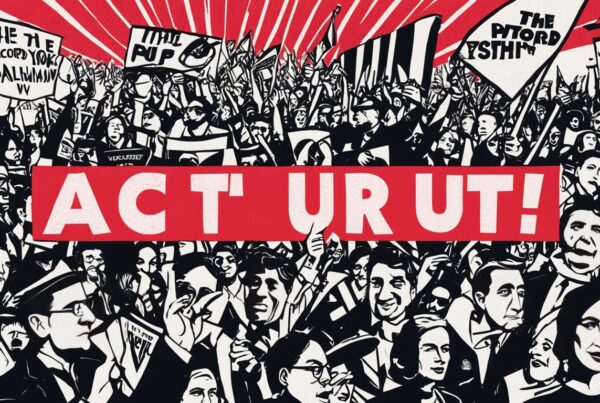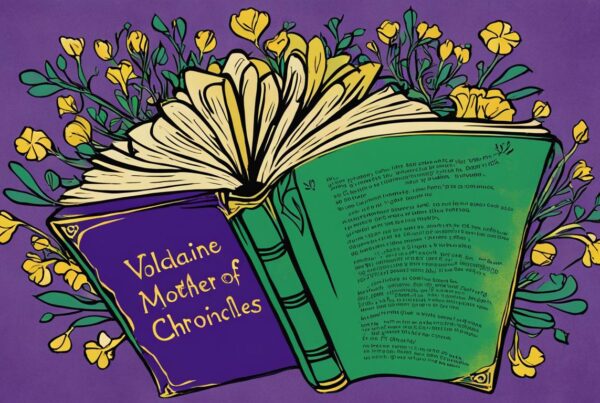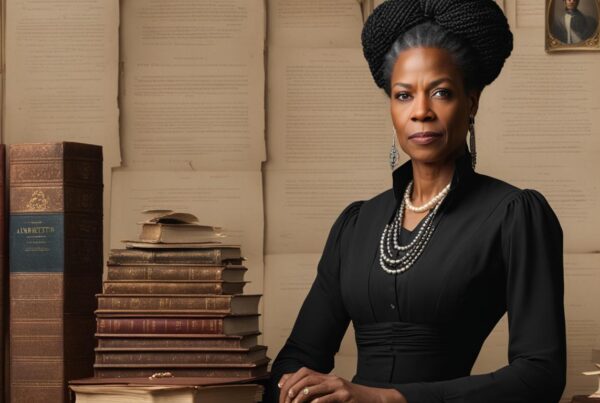Welcome to our audiobook review of “Harlem Shuffle” by Colson Whitehead. As one of the most celebrated authors of our time, Whitehead’s latest work promises to impress with its rhythmic prose and captivating story. In this review, we’ll delve into the novel’s unique characteristics, analyze the performance of the audiobook narration, and explore the themes and social commentary that this poignant work offers. So let’s get started with our detailed analysis of Colson Whitehead’s “Harlem Shuffle.”
About the Author
Colson Whitehead is an American author born in New York City in 1969. He attended Harvard University where he studied English and American Literature. Whitehead is a prolific writer with numerous works to his name, including the Pulitzer Prize-winning novels “The Underground Railroad” and “The Nickel Boys.” His other acclaimed works include “Zone One”, “Sag Harbor”, and “The Intuitionist.”
Throughout his career, Whitehead has garnered critical acclaim and numerous awards for his writing. In addition to the Pulitzers, he has received the National Book Award, the MacArthur Fellowship, and the James Tait Black Memorial Prize, among others.
Whitehead is known for his unique writing style that seamlessly blends genres and explores themes such as race, identity, and history. He has cemented his place as one of the most important authors of our time and continues to inspire and captivate readers with each new release.
Overview of “Harlem Shuffle”
Set in 1960s Harlem, “Harlem Shuffle” is a novel by Colson Whitehead that follows the story of Ray Carney – a furniture store owner (and occasional thief) – as he gets tangled up in a variety of criminal schemes and double-crosses.
The story features complex characters and a plot that keeps listeners engaged from start to finish. Within the novel, Whitehead explores themes of race, class, and power as the characters navigate the dangers and opportunities of 1960s New York City.
The novel is a departure from Whitehead’s previous works, but fans and critics alike have praised the author’s ability to capture the essence of the setting while delivering a gripping story. Overall, “Harlem Shuffle” is a must-read for anyone looking for a thought-provoking novel that keeps them on the edge of their seat.
Audiobook Narration
One of the most remarkable aspects of the audiobook version of “Harlem Shuffle” is the exceptional narration that brings the story to life. The performer does an outstanding job of capturing the rhythm and mood of the novel, making it an even more engrossing experience than reading the text.
“It’s a rich, vivid, textured book, and I thought that playing up the rhythm, especially in the dialogue, would give the characters even more distinct personalities, so I made sure to lean into that and try to make it a little more theatrical.”
The narrator’s voice acting is impeccable, breathing life into the characters and making them feel like real people. The different accents and tonal variations that the narrator uses for each character are remarkable, making it easy for the listener to distinguish between them and follow the story more easily.
Overall, the audiobook narration in “Harlem Shuffle” is a masterful performance that elevates the novel to new heights. The performer’s skillful voice acting and captivating delivery make it an absolute must-listen for fans of Colson Whitehead and anyone looking for an immersive and unforgettable audiobook experience.
Pros and Cons of Audiobook Narration in “Harlem Shuffle”
| Pros | Cons |
|---|---|
| The narrator’s performance elevates the story and makes the characters feel more alive. | Some listeners may prefer to read the physical book to form their own interpretations of the novel. |
| The different accents and tonal variations used by the narrator make it easier to follow the story and distinguish between the characters. | Listening to the audiobook may take longer than reading the book independently, as the listener has to adhere to the pace of the narrator. |
| The narrator’s delivery captures the rhythm and mood of the novel, making it an even more engrossing experience than reading the text. | Some listeners may find the narrator’s voice distracting or unsuitable for their personal preferences. |
Literary Analysis
Colson Whitehead’s “Harlem Shuffle” is a masterful example of literary analysis, featuring complex writing techniques that add depth to the plot. The narration style includes a range of literary elements, including metaphors, imagery, and symbolism. The author skillfully employs references to historical events and cultural movements, such as the Harlem Renaissance, to explore themes of race, class, and identity.
“‘Harlem Shuffle’ is a triumph of literary analysis and storytelling, showcasing Colson Whitehead’s mastery of the craft.”
The novel features an array of symbolism, reflecting the protagonist’s internal struggles and the wider societal issues the story addresses. The overarching theme of corruption and the search for redemption is explored through the character’s development and interactions with supporting characters.
Colson’s writing style is rhythmic, with attention to detail and character development. His use of language and punctuation effectively conveys the mood and tone of various scenes throughout the novel.
Symbolism in “Harlem Shuffle”
| Symbolism | Meaning |
|---|---|
| The Blackamoor Statue | Reflects the protagonist’s internal conflicts about his identity and African American heritage. |
| The Jewelry Store | Symbolizes the corrupt underbelly of the main character’s occupation and his quest for redemption. |
| The Cadillac | Represents the protagonist’s social status and his journey towards self-discovery and change. |
The use of symbolism is integral to the storytelling and literary analysis in “Harlem Shuffle,” and adds layers of depth to the overall narrative.
Character Development
In “Harlem Shuffle,” Colson Whitehead presents a rich cast of complex characters whose growth and evolution are crucial to the story’s development. At the center of it all is the protagonist, Ray Carney, a furniture salesman turned criminal who grapples with the moral implications of his actions as he becomes increasingly involved in shady dealings.
As the novel progresses, Carney’s character undergoes significant development, with his motivations and loyalties shifting in unexpected ways. His relationships with other characters, including his wife, Elizabeth, and his cousin, Freddie, also evolve over time as they navigate the dangers and challenges of life in Harlem in the 1960s.
Whitehead’s attention to detail and nuanced portrayal of his characters ensures that they feel fully realized and multidimensional. From the ambitious but flawed Carney to the supporting cast of hustlers, cops, and politicians, each character’s unique perspective contributes to the novel’s intricate plot and themes.
“I wasn’t always a furniture salesman, not just that. I walked into a bar in Harlem one day and my life changed.” – Ray Carney, Harlem Shuffle
The supporting characters in “Harlem Shuffle” are equally well-developed, with their own stories and motivations that intersect with Carney’s journey. From the ruthless gang leader Pepper to the determined detective Slattery, each character brings a distinct voice and perspective to the novel.

Historical and Cultural Context
The novel “Harlem Shuffle” is set in the bustling Harlem neighborhood of New York City during the early 1960s, a period of great cultural, social, and political upheaval in the United States. The book draws upon the rich history and cultural references of the Harlem Renaissance, a movement that emerged during the early 20th century and had a profound impact on African American art, music, literature, and intellectual life.
The Harlem Renaissance was a celebration of Black culture and identity, and it gave rise to a great deal of artistic and intellectual output that remains influential to this day. Colson Whitehead’s portrayal of Harlem during the 1960s is rooted in this historical context, exploring the legacy of the Harlem Renaissance while also depicting the challenges and struggles of Black Americans during this time period.
The book also contains numerous cultural references that evoke the spirit of the Harlem Renaissance. From jazz music to art and literature, the novel pays homage to the vibrant creative scene that emerged from this pivotal moment in American history.
Pacing and Plot Structure
The pacing and plot structure of “Harlem Shuffle” are essential aspects of the book that contribute to the overall reading experience. Colson Whitehead’s rhythmic prose and engaging narrative flow create a compelling story that keeps the reader hooked until the very end.
The plot of “Harlem Shuffle” is intricately woven, with well-crafted twists and turns that keep the reader guessing. The story is not linear and moves back and forth between different time periods and characters, but the transitions are smooth and do not disrupt the overall flow of the book.
The pacing of the book is also well done, with a perfect balance between action scenes and quieter, more introspective moments. The story never feels rushed or slow, allowing the reader to fully engage with the characters and the world they inhabit.
Overall, the pacing and plot structure of “Harlem Shuffle” are masterfully executed, providing a reading experience that is both thrilling and thought-provoking.
Themes and Social Commentary
Harlem Shuffle delves into complex societal issues and offers social commentary on various themes. Colson Whitehead skillfully weaves together a story full of depth and meaning that resonates with readers.
The novel explores the pervasive power of race and class in America and how it affects individuals and their communities. The story is set in 1960s Harlem, a time and place marked by racial tension and police brutality. In this context, Whitehead examines the role of the criminal underworld and how it intersects with the lives of everyday citizens.
One prominent theme in the novel is the question of morality and the blurred lines between good and evil. The main character, Ray Carney, is a furniture salesman turned fence, and his journey illustrates the complexities of right and wrong in a world where the lines between them are often blurred. Through Ray’s experiences, Whitehead explores the corruption endemic in society and questions the very nature of justice.
The novel also explores the idea of redemption and how it can be achieved in a world where systemic oppression and discrimination exist. Ray’s journey toward redemption and the obstacles he faces in trying to rectify past wrongs highlight the uphill battle faced by those caught in the cycle of poverty and violence.
Themes and Social Commentary in “Harlem Shuffle”
| Themes | Social Commentary |
|---|---|
| Class and Race | The pervasive power of race and class in America and how it affects individuals and their communities. |
| Morality and Ethics | The complexities of right and wrong in a world where the lines between them are often blurred, and the endemic corruption in society. |
| Redemption | How redemption can be achieved in a world where systemic oppression and discrimination exist. |
Harlem Shuffle is a powerful work that confronts difficult issues still prevalent in today’s society. Through his storytelling, Colson Whitehead highlights the struggles and injustices of everyday people and challenges readers to consider their own role in creating change.
Comparisons to Other Works
Colson Whitehead is a prolific author with a wealth of works to compare to “Harlem Shuffle.” One of Whitehead’s most famous novels is “The Underground Railroad,” which shares some similarities with “Harlem Shuffle” in terms of style and structure. Both books employ a nonlinear narrative style and explore themes of race, identity, and social justice. However, “The Underground Railroad” also incorporates elements of magical realism and is set in a historical context that differs greatly from the Harlem Renaissance backdrop of “Harlem Shuffle.”
Another of Whitehead’s notable works is “Sag Harbor,” a coming-of-age novel that takes place in the 1980s and focuses on a group of African American teenagers spending their summer in the affluent enclave of Sag Harbor. While “Harlem Shuffle” and “Sag Harbor” are vastly different in terms of setting, time period, and plot, they both showcase Whitehead’s masterful command of language and his ability to paint vivid portraits of complex characters.
Ultimately, while “Harlem Shuffle” is a unique work in its own right, it is clear that it draws inspiration and influence from many of Colson Whitehead’s earlier novels. Whether exploring a hidden underground world in “The Intuitionist” or confronting the horrors of a post-apocalyptic society in “Zone One,” Whitehead’s works are united by their artful prose and incisive social commentary.
Comparison Table: “Harlem Shuffle” and Selected Works by Colson Whitehead
| Book | Similarities | Differences |
|---|---|---|
| “The Underground Railroad” | Nonlinear narrative style, themes of race and social justice | Magical realism elements, different historical context |
| “Sag Harbor” | Command of language, complex characters | Different setting, time period, and plot |
| “The Intuitionist” | Artful prose, social commentary | Exploration of hidden underground world |
| “Zone One” | Artful prose, incisive social commentary | Post-apocalyptic setting, different genre |
“Harlem Shuffle” stands on its own as a captivating and unique work, yet it is clear that it is enriched by Colson Whitehead’s larger body of writing. Whitehead’s works are united by their lyrical language and their incisive explorations of complex social issues. Whether reading “Harlem Shuffle” for the first time or revisiting it after reading some of Colson Whitehead’s earlier novels, listeners are sure to be struck by the author’s masterful storytelling and his ability to create worlds that feel both familiar and completely new.
Reception and Criticism
Since its release, “Harlem Shuffle” has received mixed reviews from critics and readers alike. While many have praised Colson Whitehead’s immersive prose and keen eye for historical detail, others have criticized the novel’s pacing and lack of character development.
Writing for the New York Times, reviewer Dwight Garner called the book a “hit-and-miss affair” and criticized its “disjointed structure” and “thinly drawn characters.” However, other reviewers have been more positive, with NPR’s Heller McAlpin praising the novel’s “rollicking plot” and “vibrant sense of place.”
One common point of praise for “Harlem Shuffle” has been its vivid portrayal of the Harlem Renaissance and the book’s historical accuracy. Critics have noted Whitehead’s careful attention to detail and his ability to bring the era to life in a way that feels authentic and engaging.
Despite its mixed reception, “Harlem Shuffle” remains a noteworthy addition to Colson Whitehead’s body of work, showcasing the author’s ability to turn his careful eye toward different periods and contexts of American history.
Conclusion
In conclusion, “Harlem Shuffle” is a must-listen for fans of Colson Whitehead’s work and anyone interested in exploring the historical and cultural context of the Harlem Renaissance. The audiobook’s narration brings the story to life, and the novel’s rhythm and prose are a testament to the Pulitzer Prize-winning author’s craft.
The character development and themes present in “Harlem Shuffle” make for a compelling and insightful read, and the book’s exploration of societal issues is both relevant and thought-provoking. While some may criticize the pacing or plot structure, the overall reception of the novel has been positive, and it is a worthy addition to Colson Whitehead’s impressive body of work.
If you’re looking for an engaging and meaningful audiobook, look no further than “Harlem Shuffle” by Colson Whitehead. It’s a literary dance that’s sure to leave you grooving long after the final page.



